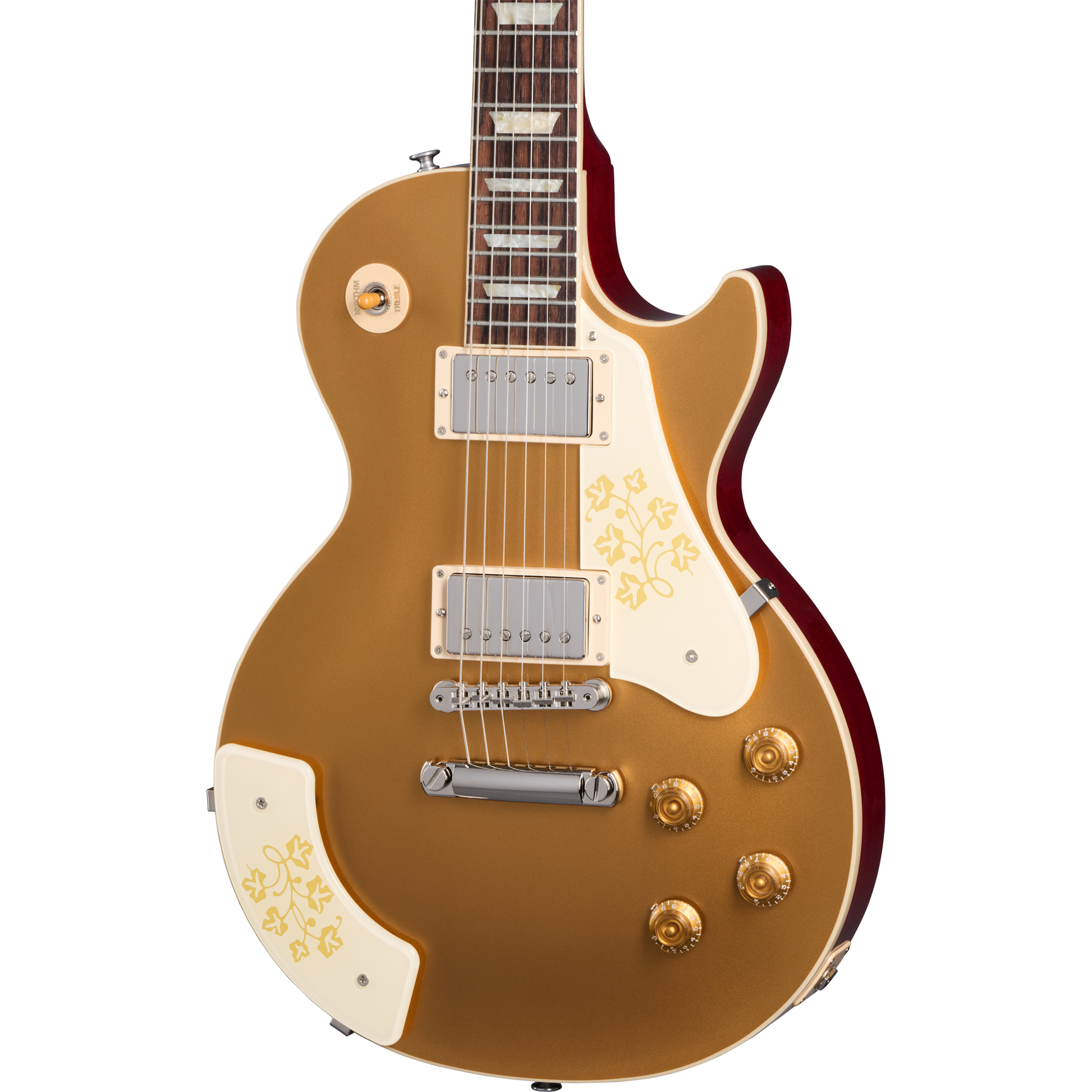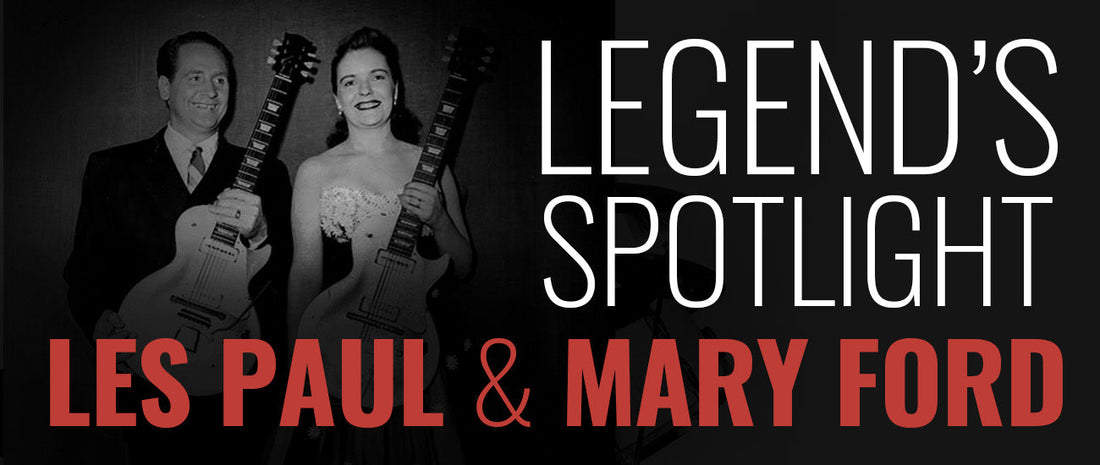

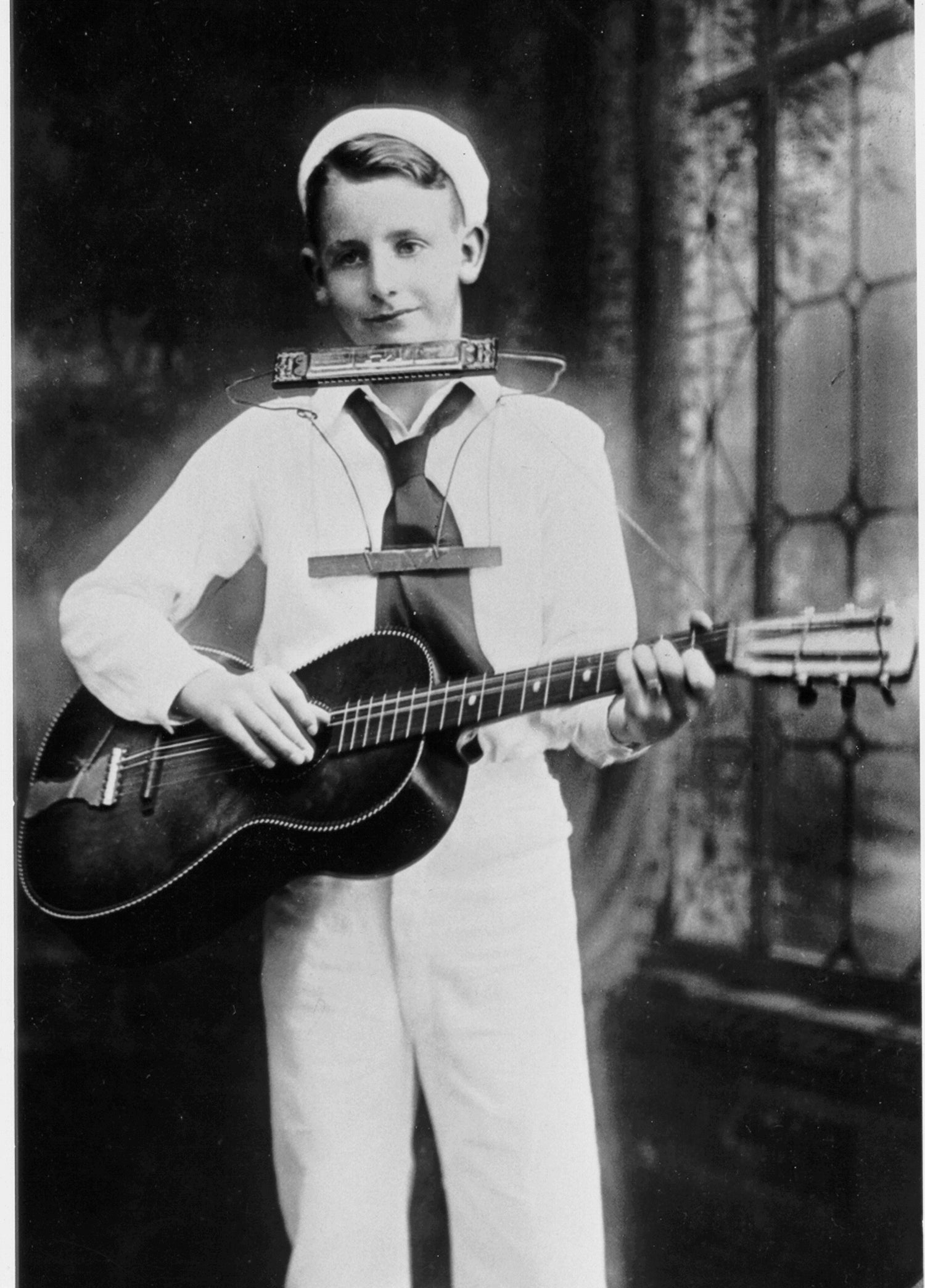
Young “Red Hot Red” with a flattop and a mouth harp
Rhubarb Red
With a head of shocking red hair and ever a joke on his lips, guitarist “Red Hot Red” began his lifelong musical career early, joining Rube Tronson's Texas Cowboys at 17 years old. The creative and colorful young country-western guitarist would soon be better known as “Rhubarb Red.” Playing country and western swing music by day and haunting Chicago’s Jazz-era music halls by night, Red began sharpening his Jazz skills (notably influenced by legendary Gypsey Jazz guitarist Django Rheinhardt). Now using a shortened version of his birth name (Lester Polsfuss), Les Paul gained a name for himself as a gifted Jazz player in the Chicago area.
At 28 years old, Paul was called to serve his country in the Armed Forces Radio Network, backing popular singers such as the Andrews Sisters and Bing Crosby, as well as playing the inaugural “Jazz at the Philharmonic” concert featuring Nat King Cole. Paul’s experience with the trio of singers—and especially his work and friendship with Crosby played a decisive role in Les Paul’s industry-shaping and ahead-of-its-time sound and style.
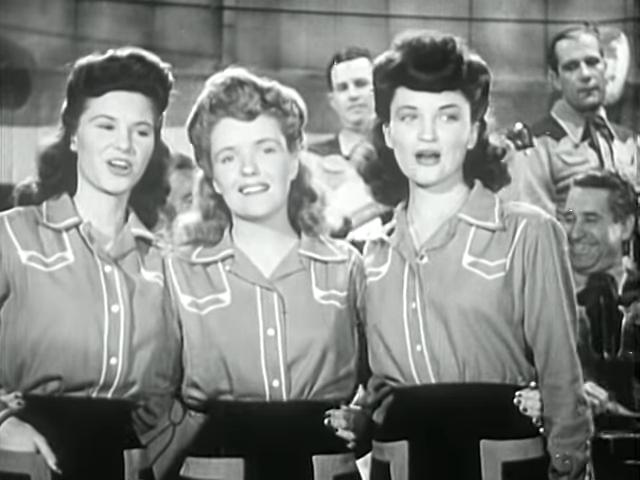
Iris Collen Summers with the Sunshine Girls Vocal Trio (center)
Iris Colleen “Mary-Lou” Summers
With an outstanding ear and musical aptitude, Iris Summers performed Gospel music alongside her Mom, Dad, and five siblings while still in grade school. Along with her daily vocal harmonizing, the young singer was inspired to take up the guitar for accompaniment, in the style of Maybelle Carter. With the help of her brother, MGM radio, and recording guitarist Bob Summers, Iris sharpened her guitar-playing skills, learning to play more complex Jazz stylings. Without a doubt, learning how to incorporate the complex substitution chords essential for a jazz guitarist helped sharpen her already impeccable ear. This skill set will prove to be a highly valuable asset in the musical challenges that await the soon-to-be singing superstar.
Summers' progressive mindset and rebellious nature — especially for the 1940s — compelled the gifted young musician to leave High School in pursuit of a life in the music business. Summers embarked on a successful radio career with her vocal trio, “The Sunshine Girls.” The group's lush and clever harmonizing put them in high demand with popular Western-style singers, such as Jimmy Wakely, Foy Willing, and the legendary “Singing Cowboy,” Gene Autry.
Although it was her voice that made her famous, it was her guitar playing chops that landed her the gig that would change her life.
After an introduction by none other than Gene Autry, Summers paid a visit to Les Paul’s garage-turned-record-cutting studio in 1946. Although she came to record a vocal part, a last-minute cancelation got Summers an invitation to sub for Paul’s rhythm guitarist. Paul admired Summer's musical talents enough to add her on as a permanent featured singer-guitarist. Still dabbling in popular Country and Western music (and with help from Paul’s goofy sense of humor), the duo performed as “Rhubarb Red and The Ozark Apple Knockers, featuring Mary Lou.” The pair continued to perform together, and Paul continued to work as a sideman, scoring his first #1 hit by backing Bing Crosby while working on their “new sound.” The couple was married in 1949, and on their way to becoming world-renowned stars of Radio, Stage, and Television, better known as “Les Paul and Mary Ford.”
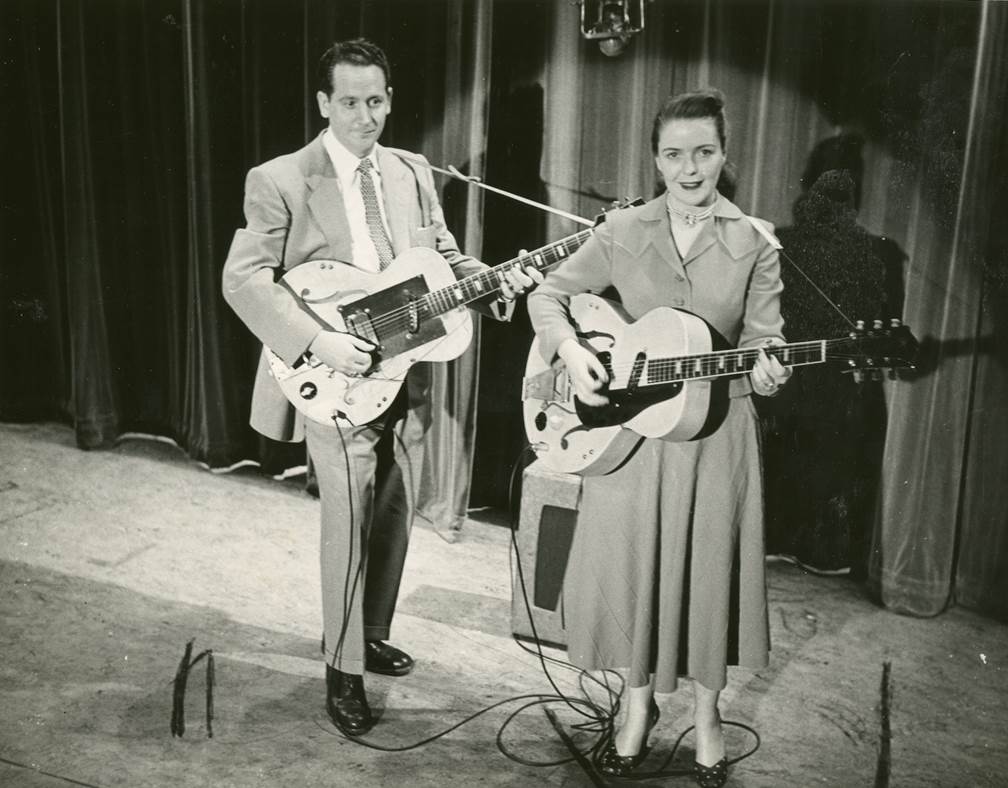
Chasing the “New Sound”
Les Paul’s 1948 single, “Lover,” is the first recording to showcase the New Sound Les Paul had been chasing. Despite the song's whimsical sound, there was nothing funny about the recording process. “Lover” was not just remarkably challenging to create with the equipment available in the late 1940s —it was impossible. However, that didn’t stop Les Paul. The otherworldly guitar sounds and multi-layered “sound on sound” studio techniques Paul used to create “Lover” are the result of years of tinkering—and occasionally forcing gear to behave beyond its design limitations.
Before “Lover” was released, its “Space age” sounds, textures, and tones existed only in Paul’s imagination. In an era before reel-to-reel tape (or multitracking), Les transformed his guitar into an orchestra of melody, harmony, and rhythm with pinpoint precision, using only his modified straight-to-disc recording lathe, determination, and ingenuity.
The sound Paul coaxed from his electrified archtop was so unique that it left other guitarists wondering how he achieved such complex and fresh guitar sounds. Music lovers even asked if they were indeed listening to a guitar at all. In some sections of the song, Paul's guitar parts are sped up to achieve notes that are well above the guitar's normal range. Other sections feature multi-layered arpeggios that create a sound reminiscent of a spaced-out guitar orchestra as a counterpoint to the melody. All told, the bass, rhythm, complex harmony, and melodies that complete the instrumental track total an astounding 37 sound-on-sound layers of Les’s guitar.

Les and Mary with Ed Sullivan, August 19th, 1951
The impact of "Lover" was significant and far-reaching. Les Paul’s innovative sounds and unique style were as influential to guitarists of his era as Jimi Hendrix or Eddie Van Halen are to later generations. Reaching the top 20, the song also paved the way for commercial success, starting with a featured guest spot on the massively popular Ed Sullivan Show. More importantly, two very fortuitous opportunities within the music industry present themselves. Opportunities that will enable the couple to fine-tune and sculpt their new sound in the way they’d envisioned.
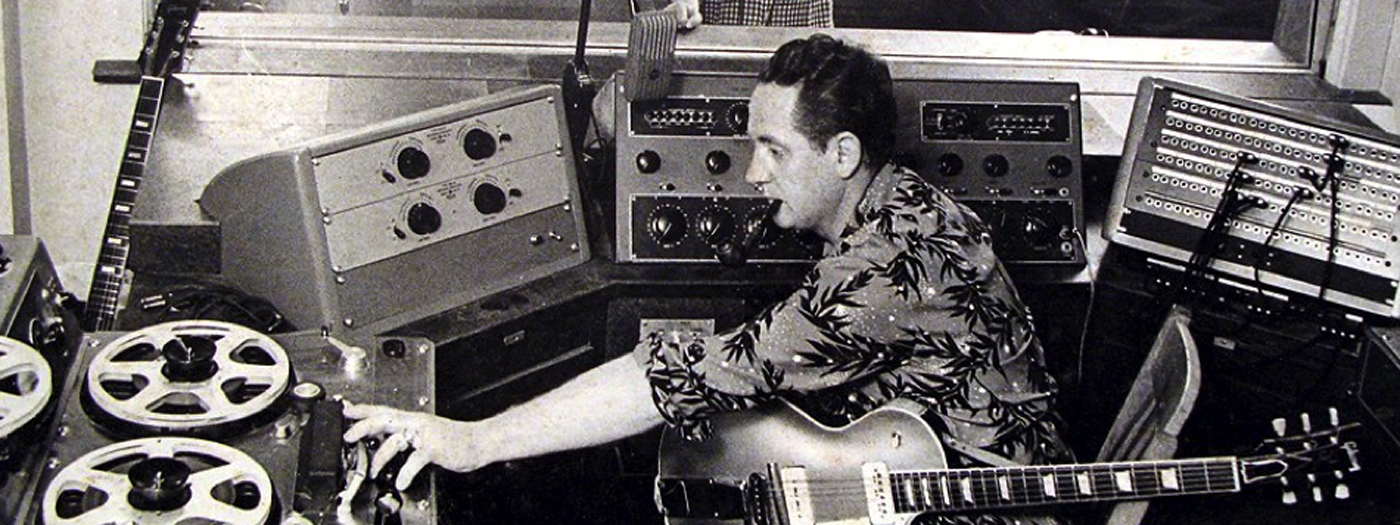
Reel-to-Reel Tape Recording
The first opportunity came in the form of cutting-edge technology discovered in post-war Germany. The reel-to-reel tape recorder enabled pre-recorded music to achieve sound fidelity comparable to that of a live broadcast. Compared to the straight-to-disk recording method used before 1950, the leap in audio quality is nothing less than game-changing. For producers and headline stars (like Bing Crosby, who invested heavily in the new tech), it’s a dream come true. It means enhanced sound quality, reduced time spent in the broadcast studio, and increased revenue through pre-recorded programming for future and syndicated radio broadcasts.
For Les Paul and Mary Ford, the astounding (but expensive) recorder was the gateway to creating more well-defined and complex “new sound” recordings. More importantly, the much greater fidelity made it possible to apply the same multi-layer New Sound recording effect to Mary Ford's voice. It must have been a banner day when “Uncle Bing” dropped off a brand new reel-to-reel tape machine, saying, “Now you can perfect your multiple-track recordings.” That’s just what they did. Within no time, Paul had his tape recorder modified with an extra head to accommodate his sound-on-sound recording technique, ushering in the modern era of recording.
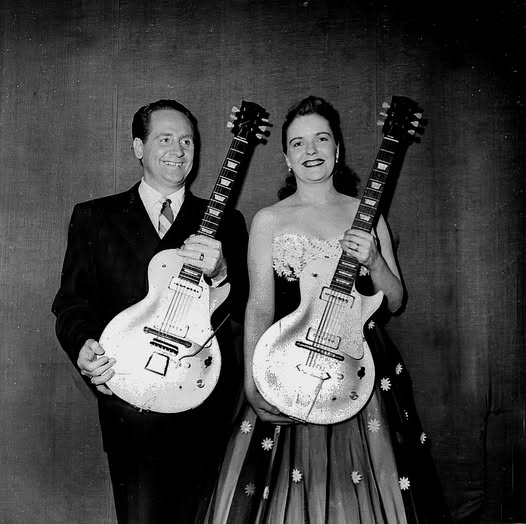
Les Paul and Mary Ford posing with early prototype Gibson Les Paul Signature models.
The Gibson “Les Paul Signature Model” Solid-Body Electric Guitar
Long before its production and widespread use, Paul was one of the first and most vocal advocates for the solid-body electric guitar. The challenge was convincing a top manufacturer to undertake such a project, knowing that the era’s most influential players strongly resisted the idea of a guitar without a robust acoustic voice. However, things are about to change.
The “Lover” single allowed Paul to step outside his usual sideman/accompaniment role as a master soloist. Paul's unique blend of country, blues, and a twist of gypsy jazz elevated his name as a hotshot guitarist, and innovator. This helped convince Gibson guitars that the time was ripe to heed Les Paul's requests for a Solid-Body Electric guitar. The result needs no introduction. The Gibson Les Paul signature helped usher in the era of the solid-body electric guitar.
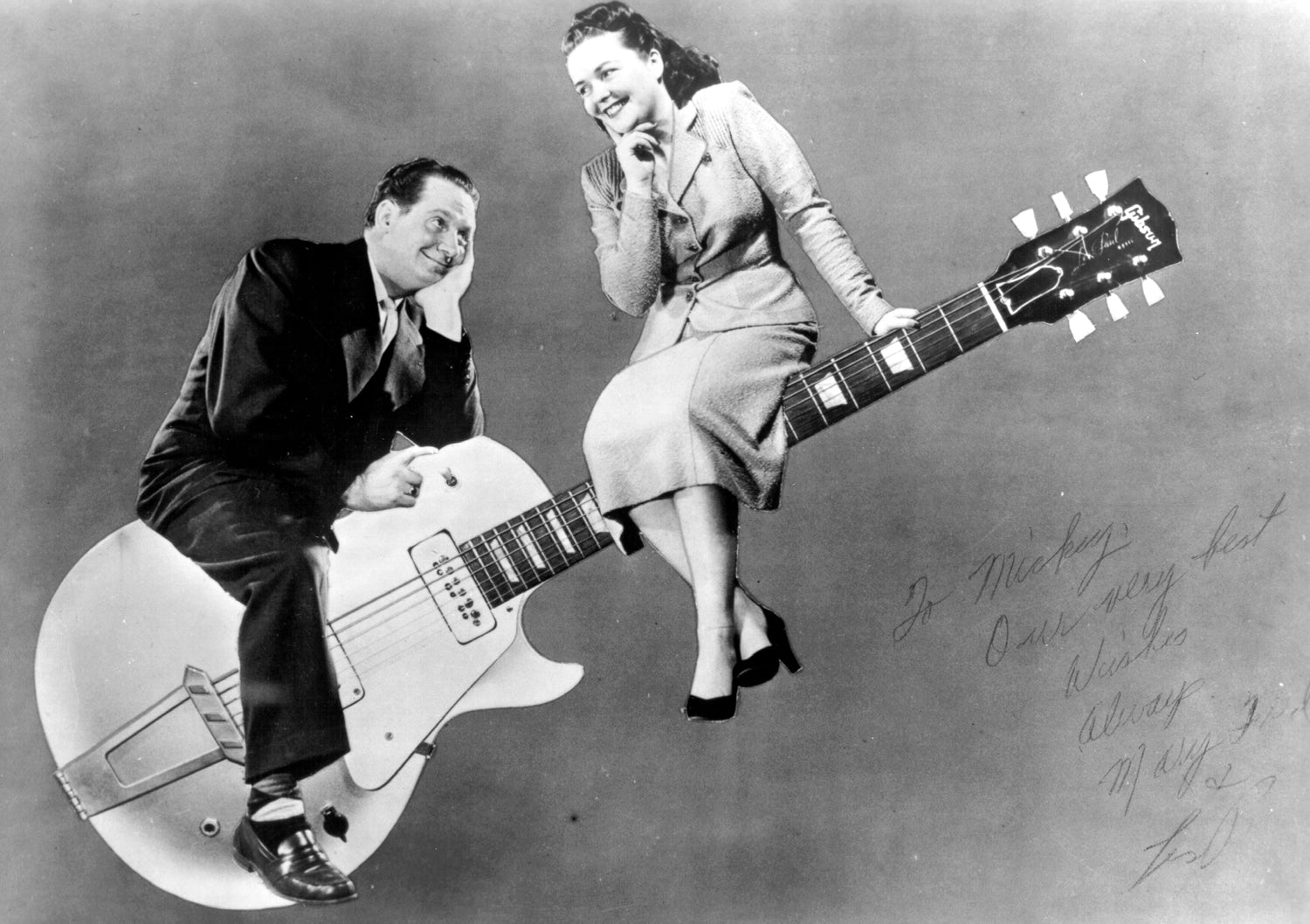
An early promo picture of Les and Mary
The New Sound in effect
With all the ingredients in place, including a recording contract with Capitol records, the stage is set, and the future is bright, but the job isn’t an easy one. Even with the modified tape machine, the duo is still limited to Paul’s innovative but challenging pre-multi-track era “sound-on-sound” recording method. The procedure takes the ability to perform with precise timing, take after take. Each part (sometimes exceeding 40 individual layers) requires careful pre-planning to determine a proper volume level before it's committed to tape. Not to mention, a single sour note (on, say, take #37) means scrapping everything and starting from the beginning again.
Of course, that meant Mary Ford had the superhuman task of delivering “Andrews Sisters” style 4-part harmony vocals with the same inflections and timing, and perfectly in tune with a lead vocal track that she hadn’t even recorded yet. Long before today's commonly used digital pitch correction plug-ins (or even multitrack recorders), Ford’s vocal performances were consistently immaculate. A testimony to her natural talent and years of experience creating harmony with her voice and on the guitar.
In the words of Les Paul: In the old days, there was a loss in quality with each generation (layer). I always made sure the most important parts were recorded last. Mary had to sing them backward: she sang the fifth part first, then 4th, and so on.

The Hit Makers
On the radio, record player, or Television, the world couldn't get enough of Les Paul and Mary Ford and their new sound. Between 1950 and 1957, the duo created 14 albums, numerous singles, and 16 top-ten hits, in addition to their weekly television show. As impressive as their 1950s success was, it pales in comparison to their astounding legacy. While many pre-Rock and Roll era Stars have darkened with time, Les Paul and Mary Ford’s contributions continue to shine, influence, and inspire.
Les Paul remains widely regarded as the father of the solid-body electric guitar and modern multi-track recording, in addition to being an influential guitarist. His bold sound, fast runs, flashy pull-offs, and undeniable style are cited as influential by a who’s who of rock-era guitar heroes. However, creating and exploring the “new sound” (and the worldwide success that would come with it) would not have been possible without the remarkable talents and infallible ear of Mary Ford. Seventy-five years since the couple's first #1 and over 50 years since Ford’s death, people are now beginning to rediscover Ford’s irreplaceable impact as a guitarist and singer.
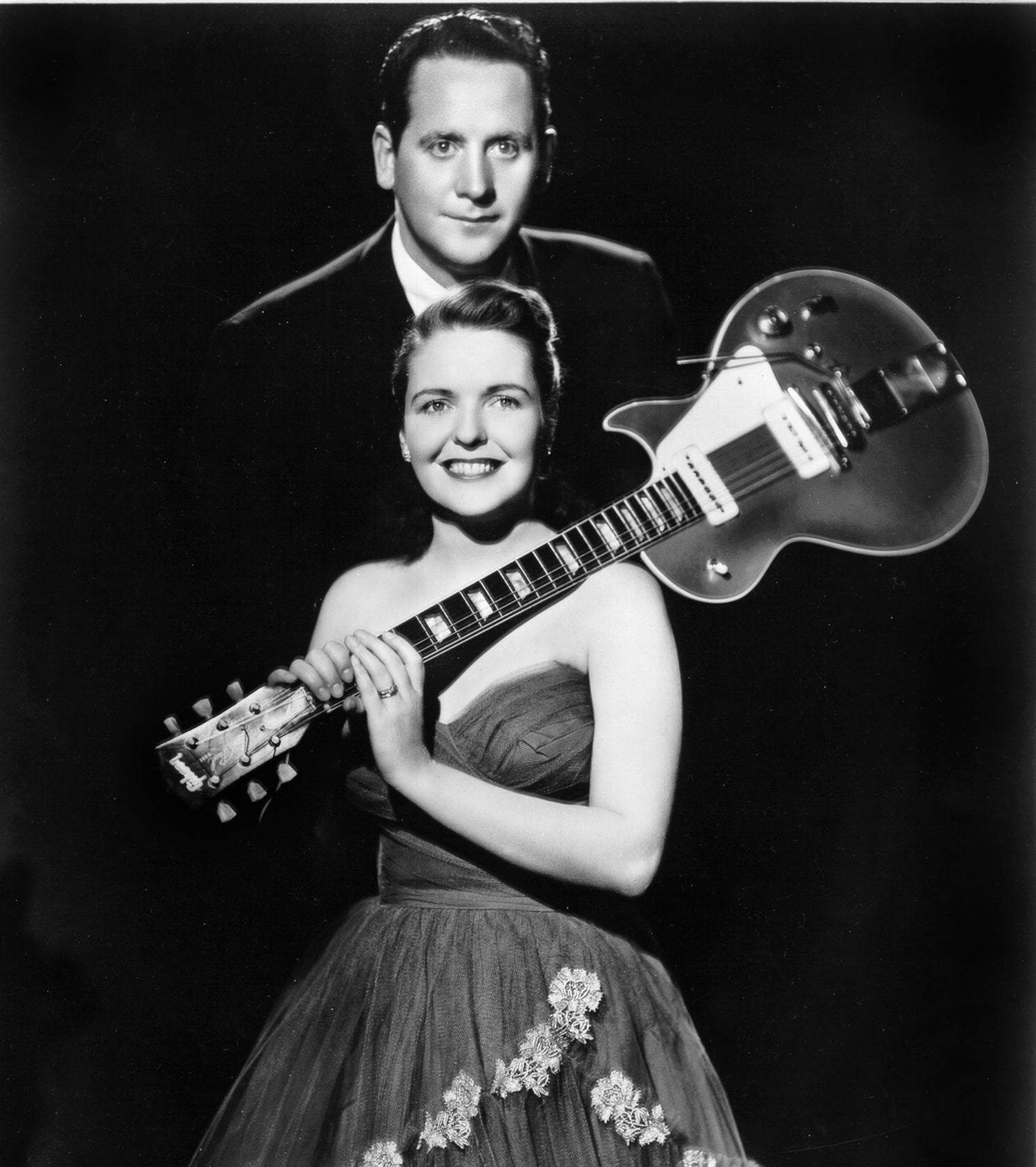
Les Paul and Mary Ford guitars
For his “New Sound,” Paul sought a surgically clean, transparent response with more significant sustain potential than the percussive attack of the traditional archtop design. Les tried stuffing foam inside the guitar to deaden its acoustic properties and covering the F-holes to reduce feedback and wolf tones. He even used a railroad tie to replace the guitar's backbone for increased sustain. With at least three modified archtop “clunkers” in his (working) collection (and a few that didn’t make it), it’s clear that Les was onto something, but he needed some help from a premium guitar builder.
As strange as it may seem, back in the 1940s, the very idea of a solid-body electric guitar was laughable at best and profane at worst. With the Fender Telecaster gaining recognition, coupled with the success of Les Paul and Mary Ford, the times were changing. The Gibson guitar company and Paul formed a working relationship. The partnership would prove more successful than anyone could have imagined.
In 1951, Les and Mary received their first Gold Top signature model Gibsons, just in time to record their first #1, “How High the Moon.”

Les Paul’s railroad tie construction “Log Guitar”

1951 L-V CES Husk with unfinished modifications

A Closer look at Paul’s modified prototype: Note the modified straight bridge, Kaufman hand Vibrola, low impedance neck pickup, and dual outputs with selector switch that enabled Paul to plug directly into a low impedance tape machine.

Les Paul and Mary Ford posing with Cherry “Standard” and Polar White “Custom” SG Les Paul models, 1961.

Mary Ford’s Custom SG Les Paul as it is today (now located at the Gibson Garage Vault)

Gibson ES-295 archtop
Ford admired the look of the all-gold body and floral pickguard Gibson ES-295, which inspired her “295” special edition. Based on the one-off 1958 guitar, the “Mary Ford” signature edition pays tribute to the pioneering female electric guitarist and singer.

Mary Ford Signature Model
During the peak of Les Paul and Mary Ford's hit-making years, Gibson introduced the Les Paul Signature (1952), the Les Paul Custom (1953), the Les Paul Junior and Special (1954), and the SG Les Paul in 1960. Saying the design is anything less than a phenomenon would be a gross understatement. In the most valid definition of the word, the Gibson Les Paul model is a genuine Icon. Its revolutionary design expanded the guitarist's creative range and redefined their performance expectations going forward. As of 2025, Gibson has manufactured over 500 versions of the Les Paul model, with no end in sight.
Gibson
Gibson Mary Ford Les Paul Standard Electric Guitar - Goldtop
+ Free Shipping
Share

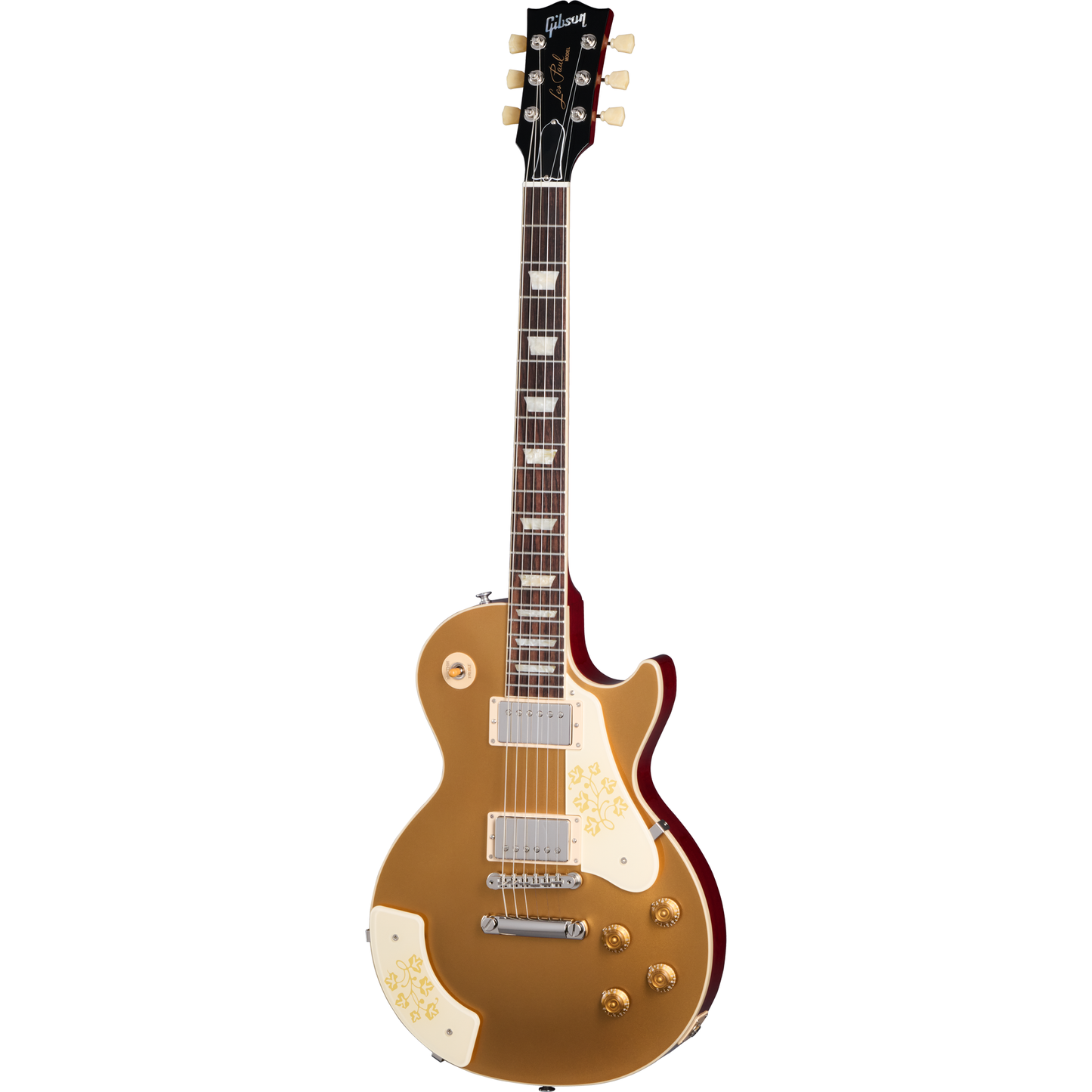
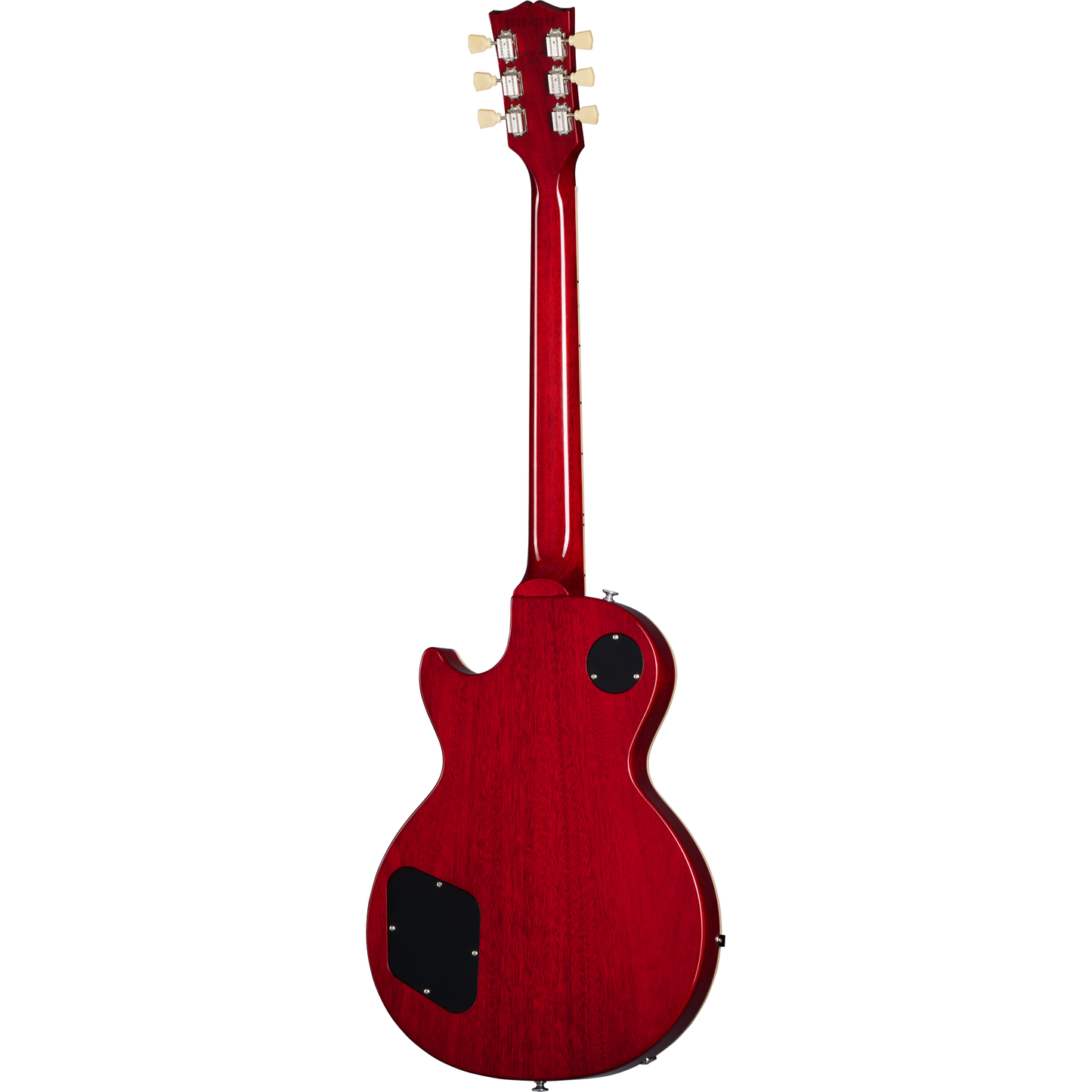
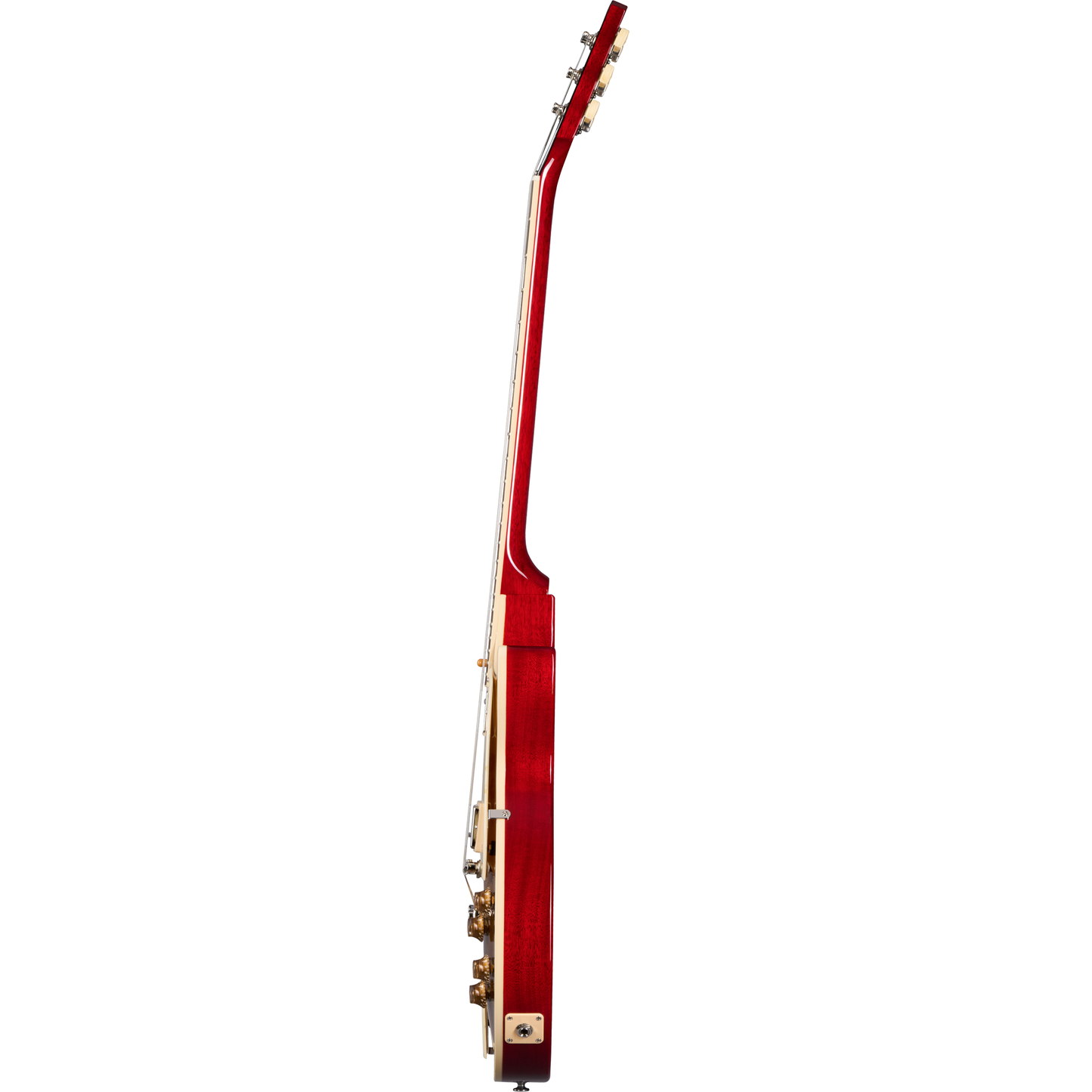




Blog posts
View all-

Alto Music Holiday Gift Guide 2025
The Holidays Are Here — and So Are the Best Deals of the Year The holiday season can get hectic—but there’s no need to let the “holiday crunch” become overwhelming. At...
Alto Music Holiday Gift Guide 2025
The Holidays Are Here — and So Are the Best Deals of the Year The holiday season can get hectic—but there’s no need to let the “holiday crunch” become overwhelming. At...
-

Blast From the Past: 50 Years of "Wish You Were...
With industry success to back it up, many Pink Floyd fans consider "Dark Side of the Moon" the "greatest album" ever made. With the same breath, the fans (and the...
Blast From the Past: 50 Years of "Wish You Were...
With industry success to back it up, many Pink Floyd fans consider "Dark Side of the Moon" the "greatest album" ever made. With the same breath, the fans (and the...

